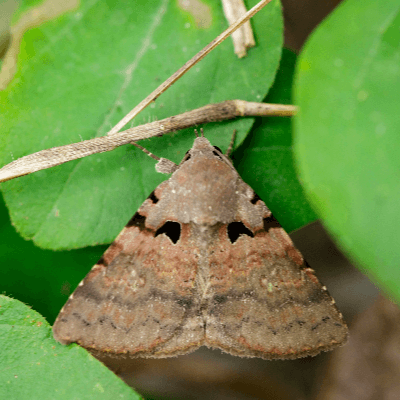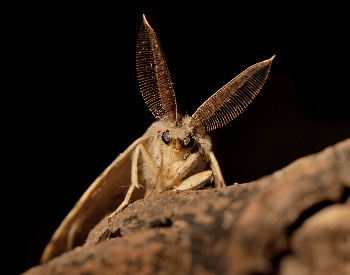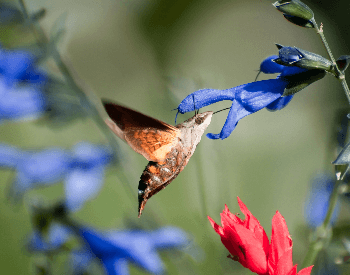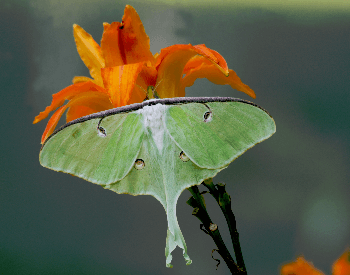
- Common Name: Moth
- Kingdom: Animalia
- Phylum: Arthropoda
- Class: Insecta
- Order: Lepidoptera
- Total Species: 160,000+
15 Moth Facts for Kids
- Moths are a flying insect that belong to the Lepidoptera order.
- It’s estimated there are 160,000 species of months worldwide, with many species yet to be described.
- A Moth is not butterfly, the difference between a moth and a butterfly is vague. Moths antennas are usually feathery and don’t have a ball on the end.
- There are far more species of moths than butterflies. There are nine species of moths for every one butterfly species.
- Most moth species are nocturnal (active at night), but some are considered crepuscular (active during twilight) and diurnal (active during the day).
- Moths are great at avoiding predators by mimicking other insects, like praying mantises, tarantulas and wasps.
- There are some species of flowers that heavily depend on moths for pollination.
- A female moth can produce anywhere between 40 and 1,000 eggs in a lifetime.
- Some species of moths are considered pests. The corn borer or bollworm is moth larva that can damage crops. Some moth larva can eat fabric and damage clothing.
- Moth balls are used to protect clothing from moth larva.
- The gypsy moth (Lymantria dispar) has a range that extends to Africa, Europe and North America.
- The hummingbird moth (Hemaris thysbe) is often confused with a hummingbird due to its appearance and behavior.
- The adult luna moth (Actias luna) doesn’t have a mouth to feed, an adult luna moth lives about a week. With the sole purpose to mate and/or lay eggs.
- The cerocpia moth (Hyalophora cecropia) is the largest native moth in North America. Female cerocpia moths have been recorded with a wingspan between 5 and 7 inches.
- A male giant silkworm moth can detect a female up to seven miles away.
Moth Pictures

A photo of a gypsy moth (Lymantria dispar).Credit: istockphoto

A photo of the beautiful hummingbird moth.Credit: istockphoto

A photo of a luna moth (Actias luna).Credit: istockphoto
Resources for more Facts About Moths
- Seven Things You Don’t Know About Moths – Seven things you didn’t know about moths, but maybe you should!
- Moths – Learn more about moths on the Smithsonian website.
- Moths – Wikipedia – Discover more amazing facts about moths on the Wikipedia website.
